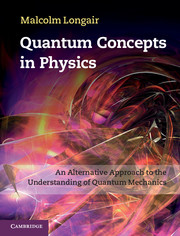Book contents
- Frontmatter
- Contents
- Preface
- Acknowledgements
- Part I The Discovery of Quanta
- 1 Physics and theoretical physics in 1895
- 2 Planck and black-body radiation
- 3 Einstein and quanta 1900–1911
- Part II The Old Quantum Theory
- Part III The Discovery of Quantum Mechanics
- Epilogue
- Notes
- References
- Name index
- Subject index
2 - Planck and black-body radiation
from Part I - The Discovery of Quanta
Published online by Cambridge University Press: 05 February 2013
- Frontmatter
- Contents
- Preface
- Acknowledgements
- Part I The Discovery of Quanta
- 1 Physics and theoretical physics in 1895
- 2 Planck and black-body radiation
- 3 Einstein and quanta 1900–1911
- Part II The Old Quantum Theory
- Part III The Discovery of Quantum Mechanics
- Epilogue
- Notes
- References
- Name index
- Subject index
Summary
The key role of experimental technique
1895 was not an arbitrary choice as the cut-off year for the history recounted in Chap. 1. Over the following years a number of experimental discoveries were made which were to change dramatically the face of physics. The origins of these discoveries can be traced to the need for increased precision in experimental physics. The industrial revolution and the widespread availability of electricity and electrical communication required more exact understanding of the physical properties of materials and also the establishment of international standards. These necessitated a much more professional approach to the teaching of experimental physics and its associated theory. As part of that movement the Clarendon Laboratory was founded in Oxford in 1868 and the Cavendish Laboratory in Cambridge in 1874. Of particular significance for this chapter was the foundation of the Physikalisch-Technische Reichsanstaldt in Berlin in 1887 with the task of providing precise measurements of the physical properties of materials which would be of importance to industry. There was an expectation that these laboratories would develop new techniques for undertaking precision measurements.
New experimental techniques were developed thanks to the development of new technologies. To mention only a few of the more important of these, better vacuums were available to physicists through the invention of the Geissler pump, invented by Johann Heinrich Wilhelm Geissler, a brilliant inventor and glass-blower, in about 1855. The vacuum was produced by trapping air in a mercury column and forcing it down the column by the force of gravity.
- Type
- Chapter
- Information
- Quantum Concepts in PhysicsAn Alternative Approach to the Understanding of Quantum Mechanics, pp. 24 - 47Publisher: Cambridge University PressPrint publication year: 2013



